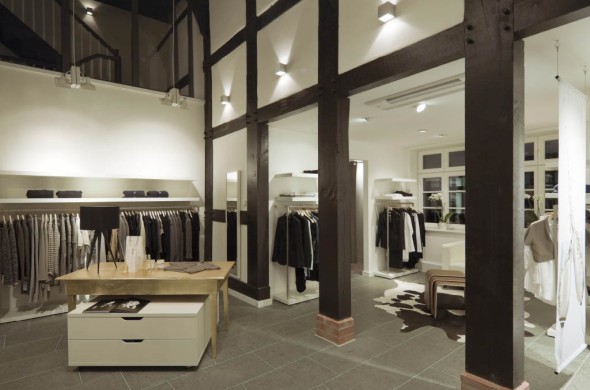In the ever evolving landscape of UAE retail, mastering the drivers of store traffic is a strategic differentiator for consultants, mall owners and brand operators. With retail currently in a growth trajectory fueled by high consumer spending, tourism and innovative design, understanding and optimizing traffic is central to market leadership. The UAE's retail sector has emerged as a global benchmark, combining cutting edge technology with experiential excellence to create unparalleled shopping destinations. This article explores the multifaceted factors, from layout and zoning to experience design and merchandising, that shape customer movement, offering actionable insights grounded in recent UAE data and international best practices.
1. Overview of Store Traffic
Definition of Store Traffic
Store traffic refers to the flow and frequency of customers entering and navigating a retail environment. It encompasses comprehensive metrics like footfall, dwell time, pathing analytics and customer journey mapping; crucial indicators of engagement, conversion potential and overall store performance.
Modern traffic analysis extends beyond simple counting to include behavioral insights, peak hour patterns, demographic segmentation and digital touchpoint interactions.
Advanced retail analytics now incorporate heat mapping technology and mobile app engagement data to create holistic traffic profiles that inform strategic decision making.
Importance of Store Traffic in Retail
In high stakes markets like the UAE, where prime retail real estate and experiential destinations dominate, customer traffic is both an opportunity and a benchmark for success. The economic significance cannot be overstated; in 2024, total UAE retail sales exceeded $100 Bln, with projections to reach $139 Bln by 2028, growing at a CAGR of around 5.4%. This growth trajectory positions the UAE as one of the world's most dynamic retail markets.
Furthermore, consumer spending has surged since reflecting strong consumer confidence and purchasing power. The tourism factor amplifies these numbers significantly, with Dubai alone welcoming over 17 Mln international visitors annually, many of whom contribute substantially to retail spending.
2. Retail Store Layout
Key Elements of Effective Layout
An effective retail store layout strategically balances accessibility, visibility and natural flow patterns to maximize both customer satisfaction and sales performance. The three fundamental layout structures, grid, racetrack and free form, are deployed based on specific factors, including merchandise type, brand identity, target demographics and observed customer behavior patterns.
Grid layouts, commonly seen in supermarkets and pharmacies, maximize space efficiency and product visibility.
Racetrack layouts, popular in department stores, guide customers through predetermined paths while exposing them to maximum merchandise variety.
Free form layouts, favored by boutique and luxury retailers, create unique, immersive experiences that reflect brand personality.
A well designed layout incorporates strategic sight lines, intuitive wayfinding and carefully planned transition zones that guide customers naturally through high priority areas and promotional hotspots. The layout must also accommodate varying traffic volumes, from peak shopping periods to quieter browsing times, ensuring a consistent customer experience regardless of crowd density.
Impact of Layout on Customer Behavior
Strategic layout optimization, especially when guided by real time data analytics and customer behavior insights, can boost sales performance by atleast 20%-25%. Modern retailers leverage sophisticated tools, including heat mapping technology, people counting sensors, and mobile app analytics to identify high traffic zones, enabling them to understand customer movement patterns and optimize product placement for maximum exposure and conversion.
In the UAE market, where luxury shopping and experiential retail dominate consumer expectations, these data driven insights are indispensable for enhancing customer engagement and strengthening purchase intent. Retailers who successfully combine aesthetic appeal with analytical precision consistently outperform competitors in both traffic generation and revenue conversion.
3. Retail Zoning
Understanding Zoning and Its Benefits
Retail zoning involves strategically segmenting store layout into distinct functional areas, each serving specific purposes such as showcasing new arrivals, highlighting promotional offers, creating impulse purchase opportunities, or establishing premium product displays. This systematic approach to spatial organization attracts targeted attention and guides shoppers through thoughtful, purposeful pathways that maximize exposure to key merchandise while enhancing the overall shopping experience.
Effective zoning considers factors including customer demographics, shopping behaviors, seasonal preferences and product categories to create logical, intuitive navigation paths. It also incorporates flexible spaces that can be quickly reconfigured for special events, seasonal campaigns, or inventory changes, ensuring the retail environment remains dynamic and responsive to market conditions.
How Zoning Affects Traffic Flow
Well executed zoning strategies encourage natural product discovery, cross category shopping and extended dwell time, directly impacting both customer satisfaction and sales performance. Strategic placement of complementary items within proximity enhances shopping convenience and significantly increases upselling potential. Cross merchandising opportunities, where related products from different categories are grouped, can increase average transaction values by 12% - 18%.
In high traffic UAE destinations such as Dubai Festival City Mall, strategic zoning around major and anchor tenants creates balanced traffic distribution throughout the property. This approach prevents overcrowding in popular areas while driving footfall to secondary zones, maximizing revenue potential across the entire retail space and ensuring optimal tenant performance.
4. Customer Experience Strategy
Importance of Experience in Driving Traffic
In the UAE's sophisticated retail landscape, shopping centers function as comprehensive entertainment and lifestyle destinations rather than mere transactional spaces. Modern retailers are strategically shifting from traditional product focused approaches to immersive experiential strategies that create memorable moments and emotional connections with customers. This transformation includes hosting live entertainment events, cultural exhibitions, interactive technology demonstrations and immersive brand activations designed to attract diverse audiences and extend visit duration.
The experience economy in UAE retail has reached unprecedented levels, with major malls diligently investing in unique attractions, themed environments and cutting edge technology installations.
Strategies to Enhance Customer Experience
Event Programming and Seasonal Activations: Large scale events such as the Dubai Shopping Festival, Ramadan celebrations, and/or exclusive brand launches create powerful traffic magnets that generate sustained visitor interest. These activations often include celebrity appearances, cultural performances, fashion shows and interactive installations that transform shopping centers into entertainment destinations.
Personalized Omnichannel Engagement: Successfully integrating online and in store touchpoints enables retailers to deliver highly personalized offers, services and experiences based on individual customer preferences, purchase history and behavioral patterns. Mobile apps, loyalty programs and social media integration create seamless experiences that drive both digital and physical engagement.
Comfort and Convenience Infrastructure: Thoughtfully designed amenities, including comfortable seating areas, clear wayfinding systems, family friendly facilities, prayer rooms and optimal ambient environments, significantly extend customer dwell time and enhance overall satisfaction. These elements are particularly important in the UAE market, where international visitors expect world class hospitality standards.
5. Retail Design
Principles of Effective Retail Design
Contemporary retail design represents a sophisticated blend of brand identity, functional layout optimization, atmospheric lighting design and multi sensory experience elements. The architectural and interior design approach must authentically reflect brand values and positioning, whether that involves luxury minimalism for high end fashion brands, playful vibrancy for family oriented retailers, or cutting edge modernity for technology showcases.
Successful retail design incorporates principles of environmental psychology, understanding how colors, textures, lighting, music and spatial arrangements influence customer emotions, behaviors and purchasing decisions. The design must also be flexible enough to accommodate seasonal changes, promotional campaigns and evolving brand strategies while maintaining consistent brand identity and customer recognition.
The Role of Aesthetics in Attracting Customers
Visual aesthetics, encompassing everything from stunning window displays and sophisticated interior lighting to carefully curated product presentations and branded environmental graphics, create powerful emotional resonance with customers. Research consistently demonstrates that customers perceive higher product quality and brand value when the physical environment and aesthetic presentation are exceptionally well executed.
In the UAE market, where consumers have elevated expectations for luxury and sophistication, aesthetic excellence is not just preferred; it's expected. Retailers who invest in world class design consistently achieve higher foot traffic, longer visit duration, increased average transaction values and stronger brand loyalty compared to competitors with inferior aesthetic presentation.
6. Retail Merchandising
Effective Merchandising Techniques
Retail merchandising encompasses comprehensive visual presentation strategies, logical product grouping methodologies and strategic promotional placement techniques designed to maximize product visibility and sales performance. Advanced merchandising incorporates focal display creation, optimal eye level shelving utilization, seasonal rotation planning and clutter minimization to avoid overwhelming customers while maximizing product exposure.
Modern merchandising also leverages data analytics to understand which products perform best in specific locations, during particular periods and with certain customer demographics. This analytical approach enables retailers to optimize inventory placement, improve sell through rates and maximize profitability per square foot of retail space.
Connection Between Merchandising and Traffic
Strategically merchandised zones, particularly those positioned near natural customer walking paths, main entrances, or popular gathering areas, significantly increase dwell time and impulse purchase behavior. Targeted displays that align with established traffic patterns and customer journey mapping can effectively convert foot traffic into measurable revenue increases, often improving conversion rates.
Effective merchandising also includes storytelling elements that create emotional connections between customers and products, seasonal themes that maintain freshness and relevance and cross merchandising opportunities that encourage customers to explore multiple product categories during a single visit.
7. Conclusion
Summary of Key Factors
To cultivate robust store traffic in the UAE's intensely competitive retail environment, sustained success hinges on several critical elements:
Data Driven Layout Optimization: Leveraging advanced analytics tools, heat mapping technology and customer behavior insights to continuously optimize traffic flow, sight lines and spatial utilization for maximum efficiency and customer satisfaction.
Strategic Zoning Implementation: Designing and implementing purposeful spatial organization that guides customer journeys through logical, engaging pathways while maximizing exposure to high priority merchandise and promotional content.
Experience First Strategic Approach: Developing and hosting dynamic activations, immersive experiences and memorable events that successfully convert casual viewers into engaged visitors and loyal customers.
Captivating Design Excellence: Aligning aesthetic presentation with authentic brand identity to create inspiring, emotionally resonant shopping environments that encourage exploration and purchase behavior.
Engaging Merchandising Strategies: Presenting products through intuitive, appealing and strategically planned displays that maximize visibility, accessibility and purchase motivation.
Final Thoughts on Enhancing Store Traffic
For retail businesses and brands aiming to achieve market leadership in the UAE’s dynamic retail landscape, adopting the proven methodologies and approaches can transform traffic optimization strategies from generic approaches into precisely targeted, results-driven solutions. Success requires a commitment to ROI focused performance metrics, including detailed footfall analysis, dwell time measurement, conversion rate tracking, and comprehensive traffic heat mapping.
In a market where industry leaders such as Dubai Mall, Mall of the Emirates and Festival City Mall are continuously rewriting customer expectations and setting new global standards, retail professionals who successfully combine experiential brilliance with analytics driven precision will lead the next wave of retail evolution and achieve sustainable competitive advantage in this remarkable market.
Explore our latest insights on strengthening store performance and traffic optimization to drive competitive advantage, supported by actionable market trends and proven methodologies.
Discover how our retail design consulting expertise in Retail Customer Experience Strategy, Retail Store Merchandising and category management, Retail Store Zoning and layout design, retail design strategy, and competitive market assessment enables businesses to measure, enhance, and sustain both customer engagement and long term growth.



